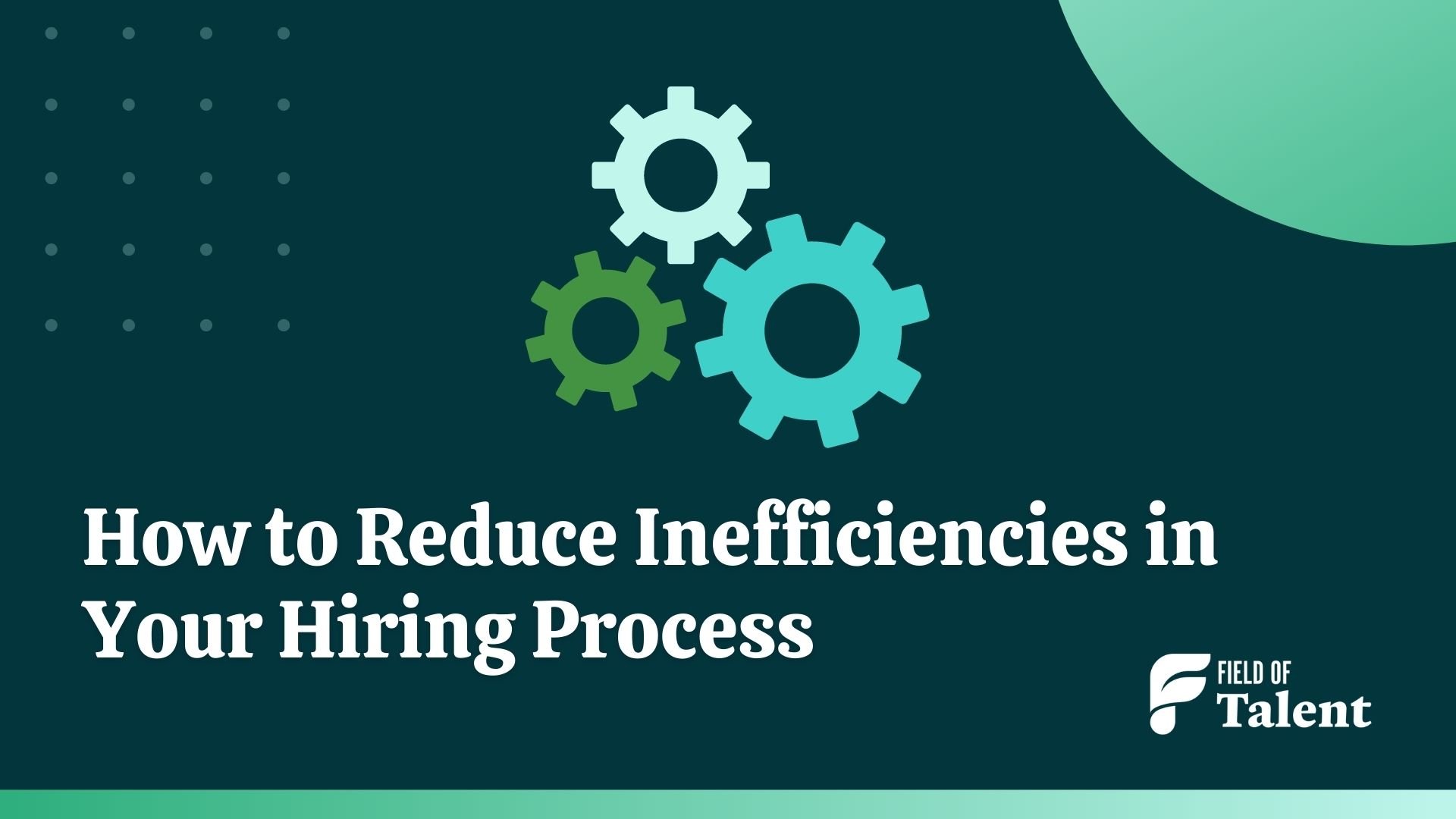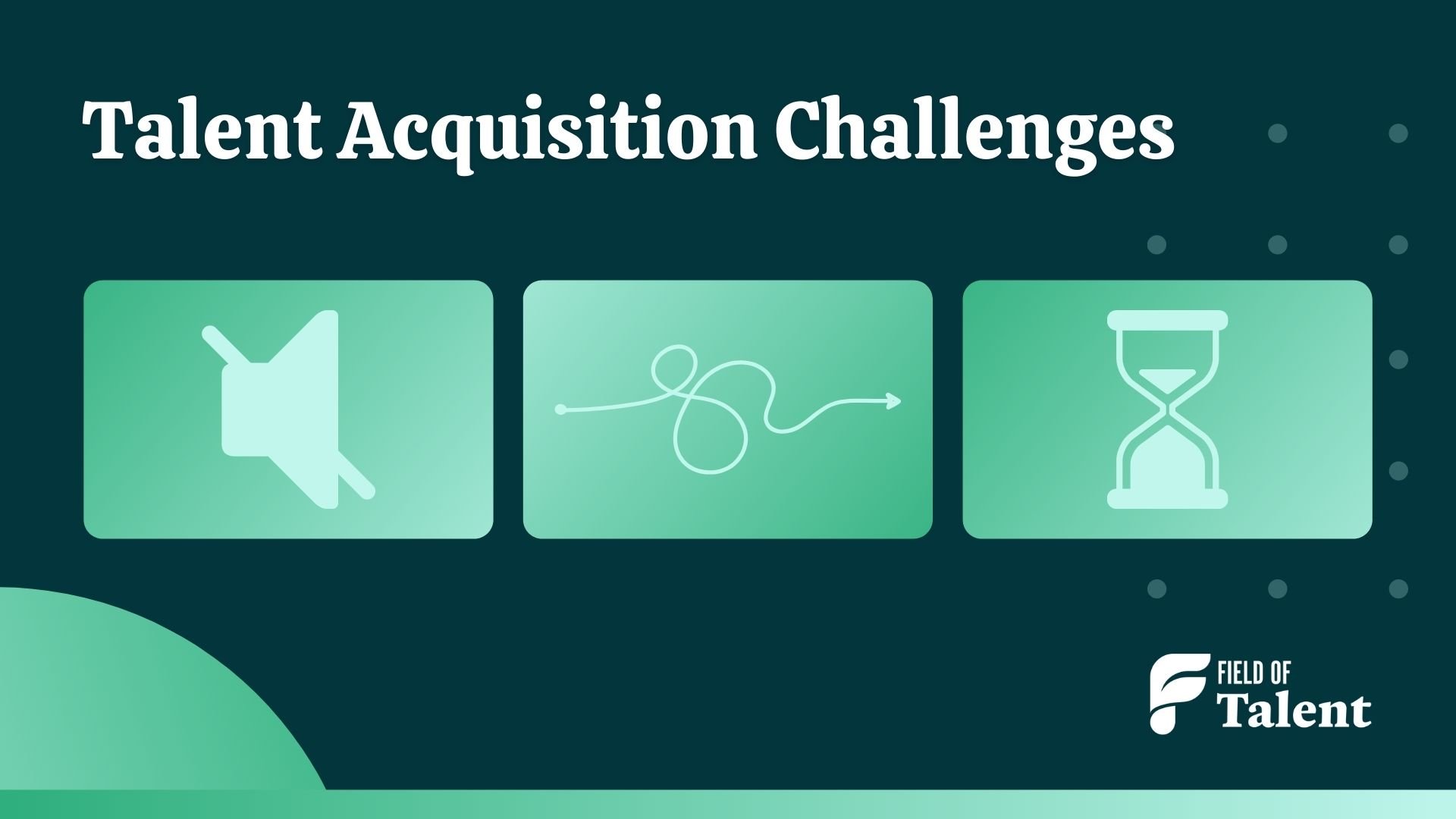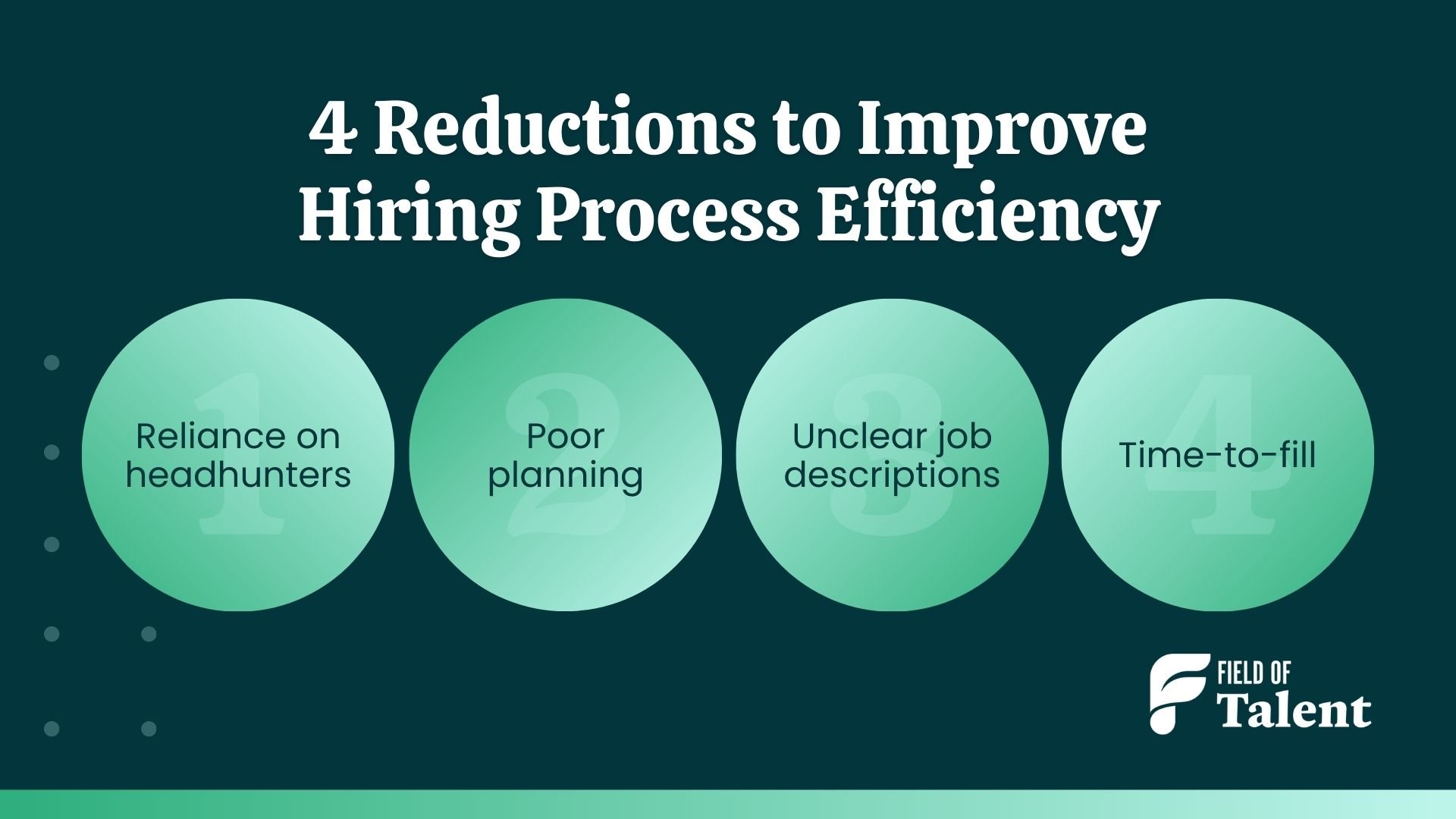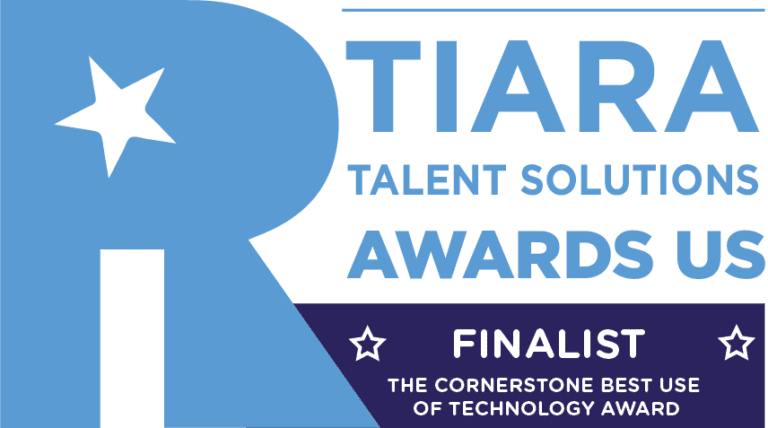
Have you watched the time your positions remain open go from 45 to 90 days?
Have you sacrificed candidate quality for a faster time-to-fill?
What about those staffing agency or recruiting firm costs? 18-20% of your candidate’s first year salary?!
At 2.8% unemployment, the competitive job market has forced your hand. Candidates are moving fast, and your organization isn’t getting the top draft picks it deserves. But, reducing inefficiencies isn’t just about speeding up your recruitment process. You have to implement a dedicated strategy and adapt it over time. Good hires don’t come easily, and the cost of vacancy is high.
You’re not alone.
30-year recruiting veteran and Fortune 200 consultant Kevin Small of Black Box Consulting shared his wisdom from decades reducing talent acquisition challenges to get the best possible active and passive job seekers.
Common talent acquisition challenges
Recruitment has changed. And today, it’s a whole new ballgame.
Many corporations outsource staffing to headhunters. Spending $150 billion annually (Statista), they don’t get a whole lot in return. Headhunters don’t have your best interests at heart. They don’t learn the broader market or your organization, so their top draft picks aren’t necessarily who your in-house hiring managers would select.
Other organizations don’t adapt with the times. Kevin pointed out after the pandemic and the rise of remote work, employee expectations have changed drastically. If possible for their workforce, companies must entertain the possibility of a work-from-home or hybrid model for their employees.
To fill your roster with top draft picks, avoid these talent acquisition inefficiencies in your recruitment process:
Lackluster communication & planning
Every recruitment process begins with a full understanding of the role for which you’re hiring. Makes sense, right? The hiring manager and recruiters need to know the role well enough to find the top talent suited for it. And if the hiring team isn’t well-prepared, they may pass on the best candidates and move forward with an active job seeker that doesn’t fit their role or culture.
Each new open position should start with an intake session: Why is the role compelling? Why would someone want to work here? Poor communication can easily derail a hiring process. Get clear on who and what you’re seeking before any other hiring practices.
A few things your hiring team should have a subject-level agreement on:
- Initial touchpoint speed
- Initial screening questions
- Feedback meeting speed
- Feedback process
- Hiring criteria
Unclear job description & application process
Covered extensively by this article, unclear job descriptions can also start your recruitment process off on the wrong foot. Ensure your job description accurately details the open position, responsibilities, advancement opportunities, and many other details.
“This includes making your position visible and accessible on a career site or your website. Optimizing your post for SEO is important but not at the peril of clarity. Be sure to check all the boxes your job seekers need to comprehend the position, its requirements and its duties.”
Your candidates should also understand how the application and interview process works moving forward. When should they hear from you? How many rounds of interviews must they endure? When do you expect to make a final decision?
Candidates are in the drivers’ seat. Cater to their needs, especially in such a competitive job market.
Long interview process
The average recruitment process is 36 days (SHRM). If you move your top potential candidates through your screenings and interviews faster than your competition, chances are they’ll accept your offer. In fact, 96% of active job seekers accept their first opportunity. If you’re slow to the punch, you self-select your organization from the process and lose access to a majority of your candidates, especially the best ones. Recruitment speed is a major advantage.
To reduce the length of your hiring process, recruiters should not be ordertakers: Instead, they should be proactive and strategic from the get-go. Every step of the journey must have clear action items. For example, after every interview, debrief sessions should happen within 48 hours or less to capitalize on fresh insights and alert your potential hires. Quick debriefs and feedback loops will drastically lower the time it takes to hire the best candidate.
Also critical to your recruitment process is your technology. When your hiring team members use your process, systems and tools the same way, your flow is far more consistent. Not only internally, but also externally. Your candidate experience benefits, and top draft picks take notice.

The modern candidate experience
Kevin pointed out candidates need to be at the center of the modern recruitment process. Hiring should be about selling your employee experience to candidates. Too often, recruiters feel their candidates need to impress them when in reality, it’s just the opposite. Your organization should bend over backwards for great candidates. Because in a fast-paced job market, that’s what it takes to get the best possible job seekers to accept your offer, not your competitor’s.
Recruitment marketing
When thinking about how to position your new jobs, ads are a go-to source for traffic. But, are they worth the high costs? In his consulting role, Kevin has found some businesses spend up to 60-70% of their recruiting budget on Linkedin and Indeed advertisements. Sure, you get 80 potential candidates to apply in two days. But a small percentage will be qualified. And, are you engaging quickly enough with those most qualified?
Spend more time clarifying your description, simplifying your marketing and targeting your ads. Paid advertising is especially helpful if your recruitment marketing is direct, clear and understandable. Remember, you’re not trying to get everyone to apply to your open position. You want the best talent that fits your unique culture.
Additionally, throughout the candidate experience, you should be evaluating who wants to work at your company. Don’t fall for the best candidates just because they have the experience level, education and the current skills you need. These job seekers are often making lateral moves in their career. When hired, they’re not going to have the same attitude in your workplace as those who truly want to contribute to your mission and cause. Plus, they’re a high early flight risk.
Adapting & optimizing an efficient recruitment process
So, the question is – how do you reduce hiring inefficiencies and get the best potential candidates on your team? First step is reframing your hiring process to woo the greatest talent.. In an economy with 2.8% unemployment, your candidates have the upperhand.
Recruitment project outsourcers (RPOs) like Field of Talent are uniquely positioned to handle these difficult recruiting times, says Kevin. Enabled by high-tech hiring software like PivotCX, RPOs help organizations reach a larger swath of qualified candidates and screen them faster. A slow recruiting process can cost you far more than top talent.
If you opt for an RPO, you may not need to invest in the latest artificial intelligence or applicant tracking systems to meet the demands of the modern candidate experience. Talent advisors like Kevin and the team at Field of Talent can help you personalize and speed up your hiring process so you can make significant strides toward attracting the best candidates.
Metrics that matter
A common talent acquisition challenge that plagues hiring managers is how to measure success. Sure, actual job performance is the ultimate metric that determines whether your team made a good hire. But, how do you measure the effectiveness and efficiency of your recruitment process. Kevin says time-to-accept and time-to-fill are the ultimate metrics.
When you speed up your hiring process, you unlock access to a whole new level of candidates. With 96% accepting their first offer, the best candidates enter and leave the job market like a shooting star. It’s your job to meet them where they are and blow them away with a personal, fast candidate experience. Field of Talent broke down tools that can dramatically reduce your time-to-accept.
If you’re backfilling an open position, your hiring manager’s key performance indicator is filling that role with an exceptional candidate as quickly as possible. By reducing your productivity and revenue loss, your team will be back at full strength in no time.
In summary, optimize your recruitment process for a candidate experience that stands out from your competition. Reduce the following:
- Reliance on headhunters
- Poor communication and planning
- Unclear job descriptions
- Time-to-fill
Instead, devote your recruiting budget to updating your hiring practices for modern candidate expectations. Like optimizing your candidate experience for mobile and text! Invest in new hiring software that allows you to organize, personalize, and speed up your talent acquisition process.

Kevin says hiring inefficiencies can drive your talent acquisition into the ground. By taking a step back and analyzing where your organization can improve, you’ll reduce the time it takes to hire great talent. And ultimately, increase your productivity and revenue.
Don’t wait to make these adjustments during a difficult hiring season. Get a free consultation with Field of Talent to reveal your recruitment gaps and fill them quickly.
Big thanks to Kevin Small for sharing his infinite recruiting wisdom. And Black Box Consulting for sharing him with us.


